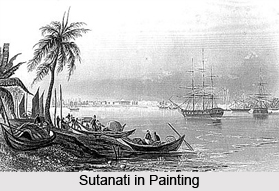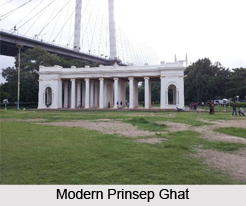 Sutanuti was one of the three rural belts in the early 17th century Kolkata. These villages- Sutanati, Gobindapur and Kalikata were merged with Kolkata which was formerly known as Calcutta.
Sutanuti was one of the three rural belts in the early 17th century Kolkata. These villages- Sutanati, Gobindapur and Kalikata were merged with Kolkata which was formerly known as Calcutta.
Establishment of Sutanati
Sutanati was once the village in medieval Bengal. The other two villages were Gobindapur and Kalikata. Job Charnock, an administrator with the British East India Company is traditionally credited with the honour of founding the city. He settled in the village of Sutanuti.
Three Villages in Kolkata
The three recognised villages, around which the city of Kolkata has grown up, must be added to at least four others as the elementary constituents of the city (including Howrah on the opposite bank.) These are Chitpur, Salkia, Kalighat and Betor. Betor was the focus of trade once upon a time, vanished in the seventeenth century. It was located around where Shibpur presently is.
Extension of Sutanuti
Sutanuti had extended along the river from Coolie Bazar, where the buildings of the Commissariat now stand in the vicinity of Prinsep Ghat, to Chitpore: but the English settlement proper was a very small affair indeed. It was confined to the locality between Babughat, by modern Eden Gardens, and a point about a hundred yards to the north of Clive Street.
Geography of Sutanati
Sutanuti was surrounded by Dhee Kolkata. On the south stood Gobindapur, high on the river-bank and covered with thick jungle. The total amount of inhabited land of Sutanati was only 840 bighas, or one-sixth of the territory conveyed by the territory of Azim-us-shan and of 204 bighas was absorbed by the Permanent Settlement itself and 400 by the great market to its immediate north.
Sutanati in British era
Job Charnock is heard of in various positions and places associated with the East India Company from around 1658. After Cossimbazar and Patna he stayed for shorter periods at Hooghly District, Hijli and Sutanuti. He was convinced about the advantages of Sutanuti as a place of settlement but his colleagues and superiors were not. However, the officials in Madras, after certain debacles at Chittagong, allowed him, with the objective of establishing a settlement, to sail for Sutanuti and he landed there on 24th August 1690, a date that has become historically famous. He lived for two and half years after that.
Job Charnock favoured Sutanuti as a settlement because of the security of the location. It was protected by Hughli River on the west and by impassable marshes on the south which is now called EM Bye Pass. Only the north had to be guarded by Fort William. That"s why; Fort William was established to secure Kolkata from the attacks of Siraj-ud-Daullah.



















